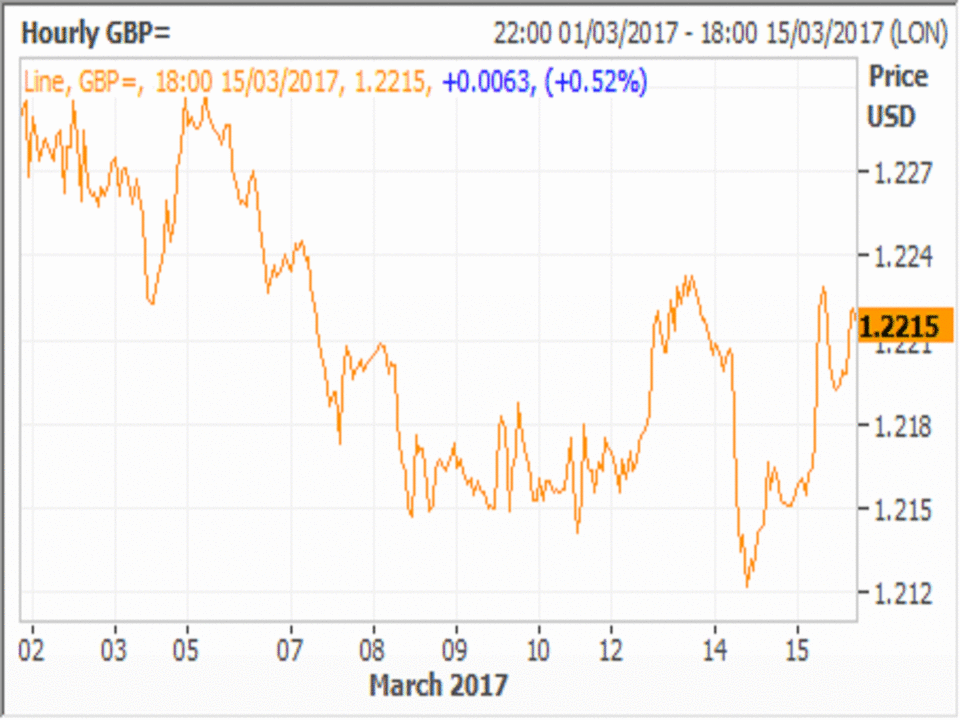Pound sterling remains under pressure amid Brexit uncertainty and prospect of Scottish referendum

The pound remained close to an eight-week low against a slew of other currencies on Wednesday, pressured by lasting uncertainty over when Theresa May will trigger Article 50, and the prospect of a new Scottish independence referendum.
In late afternoon trading, sterling was changing hands at around $1.2215 against the dollar, slightly higher on the day but still lower than at the start of March.
“Despite the fact that the pound is hugely undervalued by historical standards, the uncertainty surrounding the future of the UK means we find little to be bullish about for the pound as we face confrontational negotiations,” Joshua Mahony, market analyst at IG, said on Tuesday afternoon.
“One could be excused for feeling we have had quite enough referendums over the past year, yet with Scotland seeking a second vote, there are plenty of reasons to question what the UK will look like in just over two years’ time,” he added.
On Monday, Scotland’s First Minister Nicola Sturgeon demanded another independence referendum, to be held in late 2018 or early 2019.
“With the threat of an independence vote for Scotland adding to the horrible Brexit mixture, one can understand why the buying sentiment towards Sterling remains frighteningly low,” said FXTM analyst Lukman Otunuga.
Earlier this week, Michael Stanes, an investment director at Heartwood Investment Management, said that he was limiting his exposure to any UK assets at the moment, including equities, many bonds and the pound.
“Until we get more clarity on the political and economic outlook, we are not yet ready to repatriate assets back into the UK,” he said.
The currency is down about 18 per cent against the dollar since the EU referendum in June and while there seems to be a broad consensus that the prospect of a hard Brexit is already priced in, many believe that it could still trend lower over the medium term.
Deutsche Bank economists in early March predicted sterling would fall to $1.14 by the end of June, which would be a new 31-year low for the currency, even including the flash crash that sent the pound plunging more than 6 per cent on 7 October.
Analysts at Danske Bank earlier this month said that they expect the pound to fall to $1.19 by the end of March.

 Yahoo Finance
Yahoo Finance 